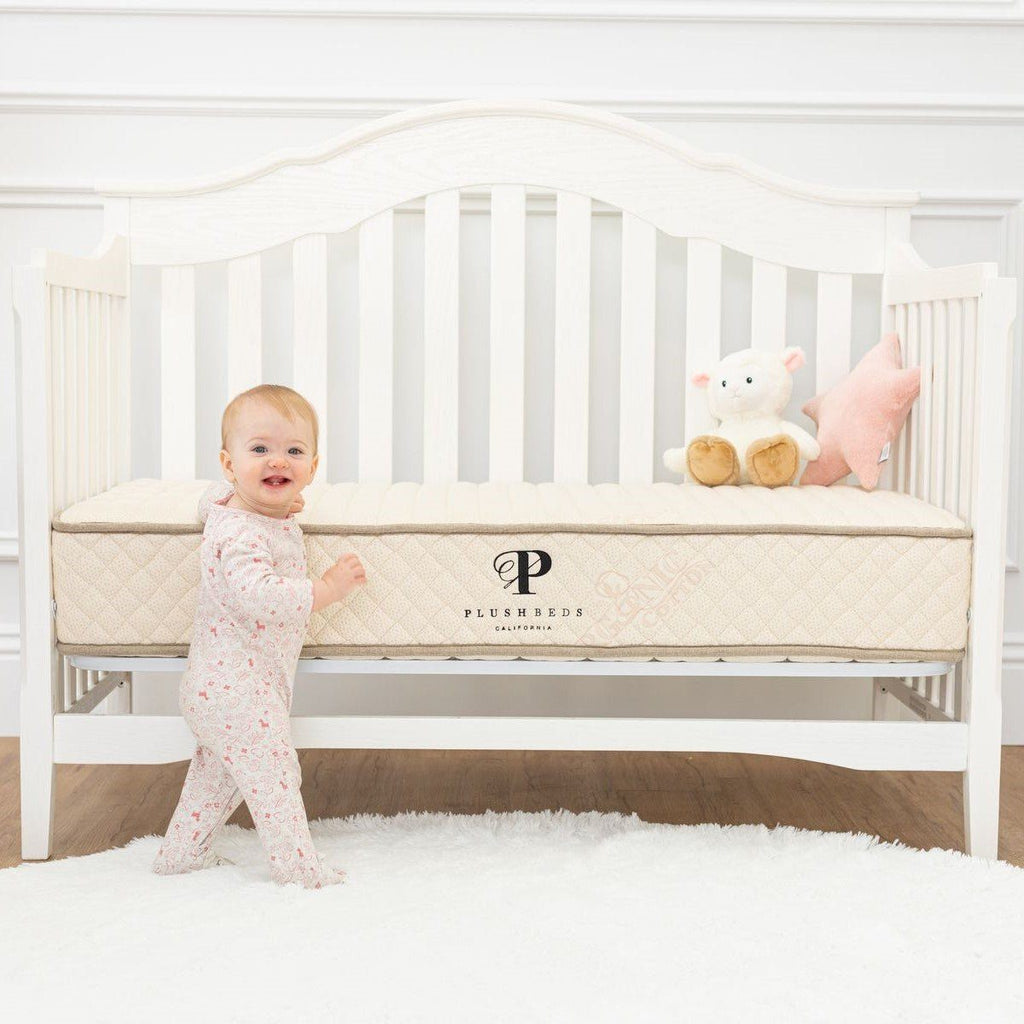Protecting Your Baby While Co-Sleeping

Co-sleeping with your baby can have quite a few benefits for both child and parent. You can quickly respond to midnight needs, you can constantly monitor your child, and you provide a sense of comfort that an infant needs in order to relax and become more secure in his or her surroundings. However, there are concerns in the bed that you need to be mindful of in order to provide a safe-sleeping environment.
Experts Differ on Opinions
When it comes to sleeping in the same bed as your child, experts are closely divided on whether there is truly a benefit or not from co-sleeping. What it boils down to is individual opinions of the situation and how your child’s needs are reflected. As each child is different, he or she may be apt to sleeping in his or her own environment.
1. Nursing Moms – As mentioned by MomBible, co-sleeping with your child makes breastfeeding that much more convenient as your sleeping schedule doesn’t have to be drastically altered. Instead of migrating to the child’s room and feeding the infant, you can simply feed him or her without moving from your location.
2. Violent Sleeper – Some experts believe that your own sleep-behaviors will be detrimental to the amount of sleep your child is able to receive. As some of us can be violent sleepers, there is a chance you could actually harm your child in the middle of the night without realizing your actions.
3. Sleeping on the Fence – When it comes to overall nighttime sleep, there is debate as to whether this is promotional or detrimental. While the American Academy of Pediatrics is worried that parents will respond to every sound a child makes automatically which awakens the child, others claim that the overall nighttime sleep is increased through a variety of methods such as quick response to the infant’s needs from the parent.
What Can You Do to Keep Baby Sleeping Safe?
For those who are determined to further bond with their infant and share the sleeping experience, there are many ways you can provide a good atmosphere for sharing your bed. This may entail alterations of the materials on your bed to create the safest experience for the infant. However, this arrangement is only temporary, and it won’t be long before baby has his or her own bed to sleep in, allowing you to thrash around all you want.
1. Blankets – While we may adore our fluffy and comfortable comforters, you’ll want to set them aside for now. The less blanket your baby is faced with, the better off he or she will be against accidental suffocation. Using fewer blankets can be beneficial, just don’t limit them to too few, for you don’t want baby to get too cold either.
2. Barriers – There are retaining walls you can buy for your bed that will help the baby stay in the location in order to promote safety. These barriers act the same way that guards on the crib do. They are a soft wall that the baby can roll into without fear of falling to the floor or becoming tucked under your own bedding materials. Essentially, they are miniature cribs that keep the baby safe when sleeping.
3. Body Pillows – In order to reduce baby from bumping into the wall, some parents will use body pillows as a barrier to prevent baby from bumping into this cold substance. Virtually any pillow will work to act as a barrier, but a body pillow will cover a greater amount of space, reducing the chances of your baby out-maneuvering the barrier in the middle of the night.
4. Anti-Pet – We all love our animals, but a pet can be dangerous to an infant, whether it is out of jealousy or purely accidental. Take cats for instance. There have been cats that would treat the infant badly by scratching them. However, there have been other cats that would accept the infant and want to “snuggle” with the newborn. In either case, there is a good chance for suffocation. This doesn’t mean you need to get rid of your animals, but shutting the door at night can prevent your beloved animal from sleeping on top of your infant.
While you could spend money on gear specifically tailored to protecting your child at night, there are many things you can do with what you have in order to provide a safe environment. Your bed was designed for adults that can manage their own safety, so you may have to become inventive in order to provide the same safety that a stand-alone crib can provide. As long as you’re responsible in your decisions for creating this environment, you should have no worries about subjecting your child to dangerous circumstances. For those who are worried about SIDS, one study proved that co-sleeping with the parent actually helps prevent SIDS from happening.
About The Author:
Ken holds a master’s in business leadership from Upper Iowa University and multiple bachelor degrees from Grand View College. As president of Morning Side Nannies, Ken’s focus is helping Houston-based parents find the right childcare provider for their family. When he isn’t working, he enjoys spending time with his three children and his wife.
Link to Us!
If you found this article useful and shareable, please copy and paste the following into the html code of your website or blog:
Learn More About Going Green at the <a href="https://www.plushbeds.com/blogs/green-sleep/protecting-your-baby-while-co-sleeping">PlushBeds Latex Mattress Blog</a>.
*Please note that we DO NOT accept guest blog posts. Any inquiries into this will be respectfully left unanswered.
The post Protecting Your Baby While Co-Sleeping appeared first on PlushBeds Latex Mattress Blog.
